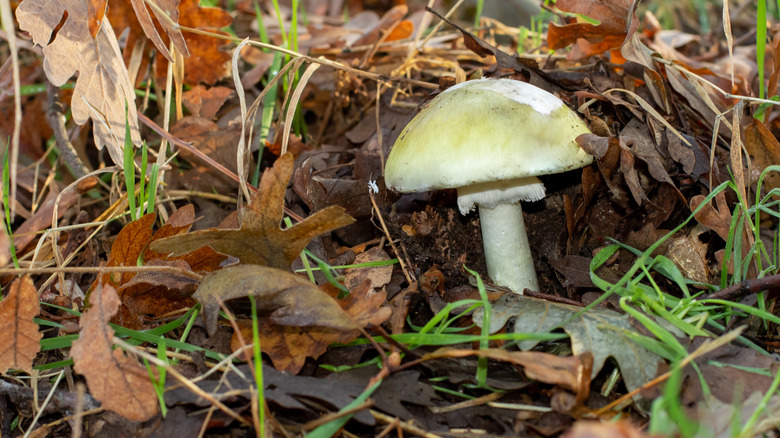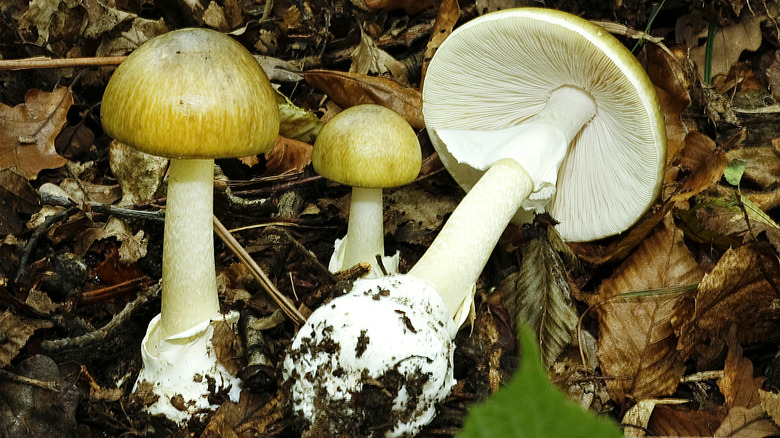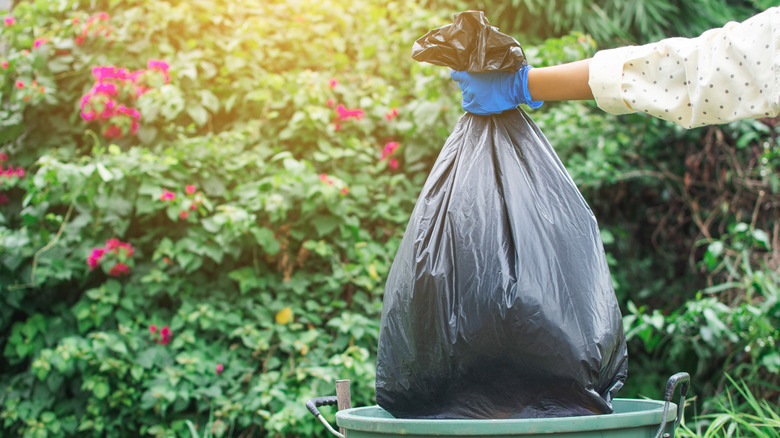What To Do If You Spot This Deadly Mushroom In Your Own Yard
While they may not look so scary, death cap mushrooms (Amanita phalloides) are one of the world's most poisonous mushrooms. These types contain high levels of amatoxins, which prevent protein synthesis in cells, leading to cell death and eventual destruction of tissues and organs. This mushroom is responsible for around 95% of all mushroom poisoning fatalities. Death can occur less than a week after ingesting a death cap, and the mortality rate after seeking medical treatment hovers around 10% to 30%. If you believe you've found death caps, you should report them to the proper tracking authorities, remove them from your yard very carefully, and dispose of them in the trash.
Death cap mushrooms are native to Europe, but they have more recently become invasive in many other parts of the world including North America, South America, and Australia. California has a particularly vicious problem with these mushrooms due to the state's moist, temperate climate and abundance of oaks and other hardwood trees. While they may be fungi, these dangerous mushrooms are no laughing matter. Here's how you can properly identify and safely get rid of these mushrooms in your lawn.
Identifying death cap mushrooms
Death caps tend to emerge after a heavy rain and are usually found in the mid-to-late summer through fall. The death cap mushroom doesn't have a particularly special appearance, and they look different as they mature, which can make them hard to identify out in the wild. A young death cap will have a short and bulbous cap, which flattens out as the mushroom grows taller. The caps are usually a sickly yellowish-green color with a slightly-metallic sheen. These mushrooms can reach about 6 inches tall and 6 inches in diameter when fully grown. Underneath, death caps have an off-white stem (sometimes with a skirt), delicate white gills, and a distinct eggshell-like sac at the base, which peels back as the mushroom erupts.
Some harmless and even edible mushrooms may look very similar to the death cap. For example, Asian straw mushrooms, also known as paddy straw mushrooms (Volvariella volvacea), can also be short and bulbous in their button stage but tend to be more brownish in color. If there is any doubt in your mind, it's best not to eat any mushrooms you find sprouting around. Proper mushroom identification can take years to master — and even the masters make mistakes.
Report, remove, and dispose
If you think you've spotted a death cap mushroom, snap a few photos and report the location to your local parks and wildlife resources. Many researchers use reports to help them track the spread of the invasive species. Touching the mushrooms won't transmit any poison, but it's still wise to wear gloves and avoid touching your nose, eyes, or mouth. With gloved hands and a garden spade, dig out each mushroom, ensuring you remove the entire stem and base to prevent regrowth. Do not throw the mushrooms into your compost or garden. Instead, they should be bagged and thrown in the garbage. Thoroughly wash your hands after removing death caps and wash any garden tools before using them near edible produce.
If you suspect that you or a loved one may have ingested Amanita phalloides, call Poison Help of America's Poison Centers at 1-800-222-1222 and seek medical attention immediately. If possible, collect a portion of the uneaten mushroom to be brought in for testing and identification. Poisoning in humans is uncommon, but pets may be more likely to ingest death cap mushrooms. If your pet has eaten the mushrooms or groomed themselves after playing near them, bring your furry friend to a veterinarian immediately.


